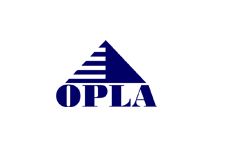A few days ago I attended a Greeters event in Ashland, OR where I was asked the simple, yet powerful question, “How do I know if my idea is worth patenting?”
Powerful means it will move the money and block copycats. If either side is weak, fix that first.
The Two-Magnet Test
- Will this attract revenue or strategic leverage in the next 2–3 years?
- Will this attract copycats once it ships?
If the answers are yes and yes, keep going. If not, refine the concept.
Do a Simple Expected-Value Check
If the patent helps you protect or unlock six figures or more of lifetime value, the math can work fast. If the upside is tiny, consider a lighter strategy.
Patents are tools, not trophies.
Red Flags I Call Out Early
- You can change one part and avoid the claims with no loss of performance.
- The only value is a feature that customers do not care about.
- You already disclosed more than a year ago and want broad international rights.
- The idea is owned by your employer or a prior contract.
- The budget and runway cannot support a real filing and follow-through.
A Simple Scorecard You Can Use Today
Score each from 0–5 and add them up.
| Factor | Score (0–5) |
|---|---|
| Customer value and willingness to pay | |
| Copyability once released | |
| Differentiation over the closest art | |
| Technical depth you can teach in a spec | |
| Strategic fit with your roadmap | |
| Budget and stamina to prosecute |
How to read your total:
- 22 or more: file now or file a solid provisional within two weeks.
- 16–21: tighten claims, gather data, and revisit in thirty days.
- 15 or less: hold; use a defensive publication or keep as a trade secret.
Special Notes for Software and AI
Focus on the technical improvement: reduced compute, better latency, improved robustness, or a new control flow that changes system behavior. Claims that only recite a business outcome will struggle.
Protect data pipelines, model control systems, and integrations. Keep weights, prompts, and training code as trade secrets when secrecy gives you leverage.
When the Answer Is No
Sometimes the right move is to skip the patent. Use secrecy, speed, brand, and customer love. Ship, learn, and come back with a stronger mechanism that truly deserves claims.
The Practical Summary
Patent when you can say three things with confidence:
- I can teach the build and use in detail.
- I am meaningfully different from the closest prior art.
- This will generate real money or real leverage, and competitors will try to copy it.
If you can say all three, file. If you stumble on any, fix that first.
Get in touch or explore more strategy in the Protect & Profit Blog.


